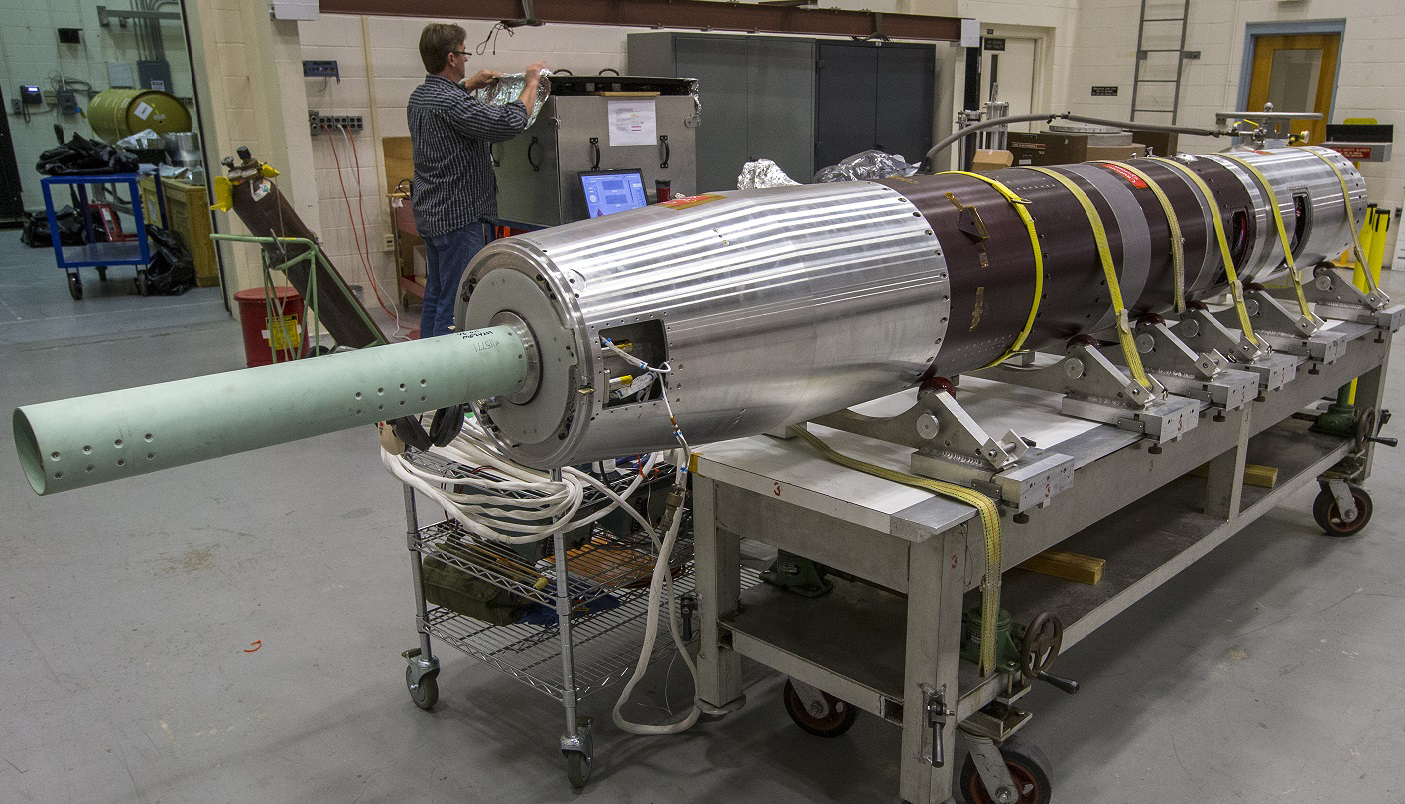Update – Dec. 10, 2015: The launch scheduled Dec. 12 of the Terrier-Improved Malemute suborbital sounding rocket carrying the Multiple User Suborbital Instrument Carrier (MUSIC) from Wallops has been postponed to no earlier than January 2016. During testing this morning with the rocket on the launch rail, the team discovered an issue with the payload that necessitates it to be taken off the rail. Thus, the launch has been postponed while the payload team investigates the issue.
Update – 5 p.m., Dec. 4, 2015: The Terrier-Improved Malemute suborbital sounding rocket carrying the Multiple User Suborbital Instrument Carrier has been rescheduled for Saturday, December 12, between 9:30 and 11:30 a.m. EST. The backup launch days are Dec. 13, 19, 20, 21 and 22. The launch has been rescheduled from Dec. 7 to de-conflict with Department of Defense activities planned in an area of the Atlantic Ocean required for the launch to be conducted.
Update – Dec. 4, 2015: The Terrier-Improved Malemute suborbital sounding rocket carrying the Multiple User Suborbital Instrument Carrier (MUSIC) is scheduled for launch from NASA’s Wallops Flight Facility between 9:30 and 11:30 a.m. EST, Monday, Dec. 7. There are no backup dates currently determined for this launch.
Update – Dec. 3, 2015: NASA has postponed the launch of the Terrier-Improved Malemute suborbital sounding rocket scheduled for Friday, Dec. 4. A new launch date has not been determined. The Dec. 4 launch attempt was postponed because the sea state is not expected be safe for the payload recovery boat and crew.
Original Story: A rocket launch from NASA’s Wallops Flight Facility on Dec. 4 will be MUSIC to the ears of aspiring and early career engineers testing new space technology on a suborbital vehicle.
Dubbed the Multiple User Suborbital Instrument Carrier (MUSIC), the payload will fly on a NASA Terrier-Improved Malemute sounding rocket between 9:30 and 11:30 a.m. The backup launch days are Dec. 7 – 10.
The launch may be seen in the Wallops region from southern Delaware to the mouth of the Chesapeake Bay.
MUSIC will carry several Wallops engineering development projects and experiments from West Virginia University, Morgantown, through the NASA Undergraduate Student Instrument Project.
West Virginia has conducted three flights in 2014 with similar payloads on sounding rockets and balloons in preparation for this mission. The payload will validate ionospheric and upper-atmospheric physic theories and measure space weather activity.
Carsell Milliner, MUSIC mission manager from the Wallops’ Sounding Rockets Program Office, said, “The mission is allowing engineers at Wallops that have not had experience with sounding rockets to gain a familiarity with these suborbital missions. The work being done will result in a standard payload carrier with predefined mechanical, telemetry, power and attitude control capabilities.”
“This may allow us to respond quicker in developing science and technology payloads and these payloads also may be less expensive than developing carrier systems from scratch,” he said.
During the 17-minute flight, NASA will test several technologies including a solid state altimeter box; a self-inflating flotation system for payload water recovery; and gauges to take payload measurements to improve temperature and stress algorithms.
In addition, the Diminutive Assembly for Nanosatellite deploYables (DANY) is being tested.
DANY is designed to unlatch a stowed device, such as a solar panel, on a small spacecraft such as a Cubesat. Measuring nearly three-inches long, a quarter-inch wide and quarter-inch thick, DANY will release a hinged piece of aluminum simulating a solar panel.
The NASA Visitor Center at Wallops will be open at 8:30 a.m. for viewing the launch.
Live coverage of the launch is available via UStream beginning at 9 a.m. on launch day. The status also can be followed on launch day on Twitter and Facebook.
The launch is supported through NASA’s Sounding Rocket Program at Wallops. NASA’s Heliophysics Division manages the sounding rocket program.
Keith Koehler
NASA’s Wallops Flight Facility
keith.a.koehler@nasa.gov



























